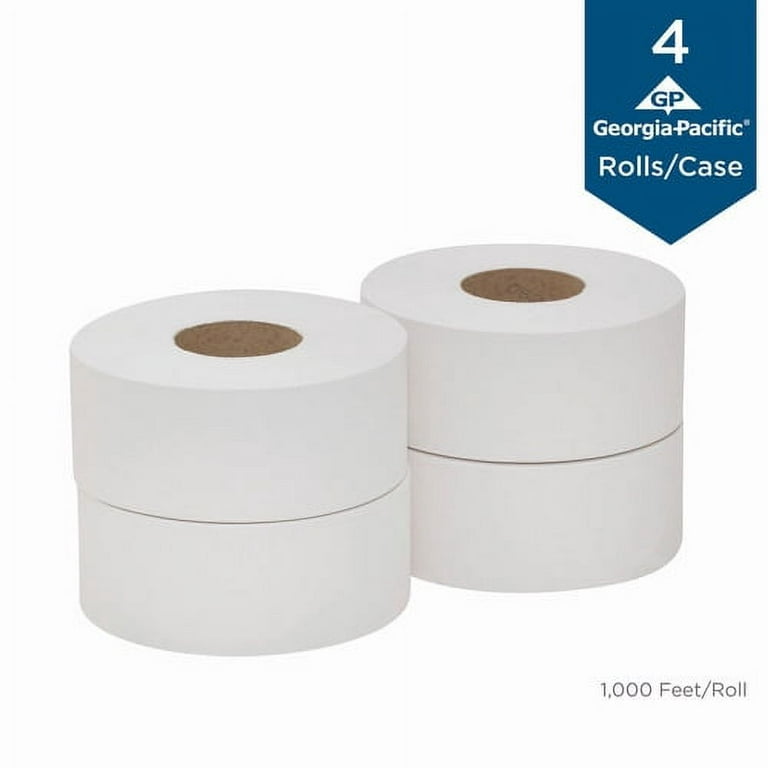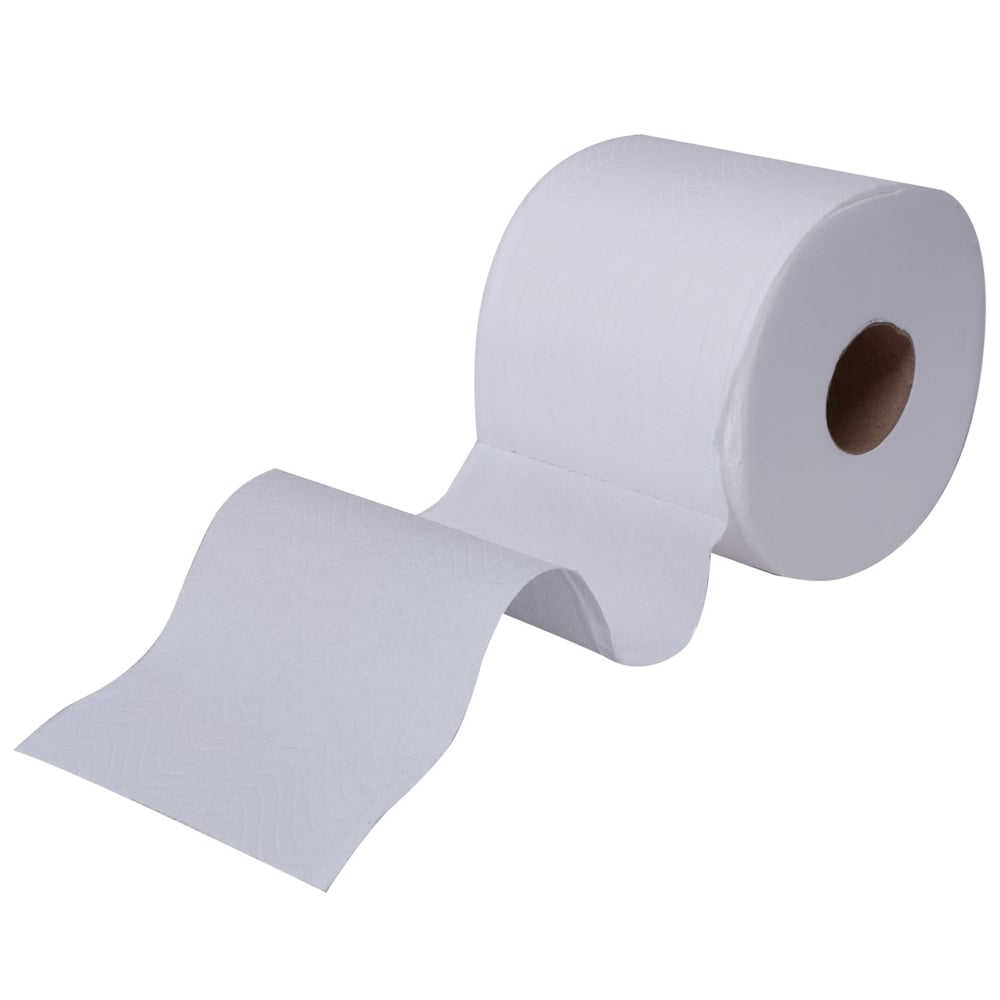toilet paper is a household essential that we often take for granted. However, have you ever stopped to think about the different sizes of toilet paper rolls? If so, you’re not alone. In fact, there is much more to toilet paper roll sizes than meets the eye. In this ultimate guide, we will dive into the history, types, and factors influencing the selection of toilet paper roll sizes.
Optimizing Toilet Paper Usage: Roll Size Considerations

When it comes to toilet paper, size does matter. The right roll size can make all the difference in terms of cost, convenience, and environmental impact. Here are some key considerations to keep in mind when choosing the perfect toilet paper roll size for your needs:
Frequency of Use
The frequency of use is an essential factor to consider when selecting a toilet paper roll size. For instance, if you are purchasing toilet paper for a high-traffic area such as a public restroom or a large household, a jumbo roll would be more appropriate to avoid frequent restocking. On the other hand, a standard roll may suffice for a single person or a small family.
Space Constraints
Another crucial consideration is the amount of storage space available for your toilet paper rolls. If you have limited storage space, a smaller roll size may be more practical. However, if space isn’t an issue, opting for a larger roll size could save you from frequent trips to restock.
Personal Preference
Some people may prefer larger rolls for their perceived value and convenience. Others may opt for smaller rolls due to personal preference or ease of handling. It ultimately boils down to what works best for you and your household.
Comparing Single, Double, and Jumbo Rolls: Which Size is Right for You?
Now that we’ve covered the main considerations when selecting a roll size, let’s take a closer look at the three main types of toilet paper roll sizes: standard, double, and jumbo.
Standard Rolls
Standard rolls are the most commonly used size in households and businesses. These rolls are typically 4 inches wide and 5 inches in diameter, containing about 160 sheets per roll. They are designed to fit into a toilet paper holder that is mounted on the wall.
Standard rolls are ideal for small families or single individuals with average usage. They are also widely available and come in a variety of options such as 1-ply, 2-ply, and ultra-soft.
Double Rolls
Double rolls, also known as megarolls, offer twice the amount of paper compared to standard rolls. They are about 4 inches wide and 8 inches in diameter, containing approximately 308 sheets per roll. This larger roll size means fewer changes and less frequent restocking.
Double rolls are perfect for medium-sized households or high-traffic areas such as busy offices or businesses. However, it’s important to note that not all double rolls contain the same amount of paper. Some brands may only have around 250 sheets per roll, so be sure to check the label before purchasing.
Jumbo Rolls
Jumbo rolls are the largest of the three and are often used in public restrooms or other high-traffic areas. These rolls are about 5 inches wide and 6 inches in diameter, containing approximately 1000 sheets per roll. They are designed to fit into specialized dispensers and require less frequent restocking compared to standard or double rolls.
Jumbo rolls are not recommended for household use as they may not fit into regular toilet paper holders and can be costly. However, for large families or businesses, jumbo rolls can be a cost-effective option in the long run.
The Environmental Impact of Toilet Paper Roll Size

Apart from considering personal preferences and practicality, it’s essential to consider the environmental impact of your toilet paper roll size selection. The average American uses about 100 rolls of toilet paper per year, which amounts to around 15 million trees being cut down annually for toilet paper production.
While the type of paper used for toilet paper is a significant factor in its environmental impact, the size of the roll also plays a role. Larger rolls require more paper, which means more trees are being cut down. Additionally, larger rolls often come wrapped in plastic packaging, contributing to plastic waste pollution.
However, using jumbo rolls in high-traffic areas can reduce the number of trees being cut down compared to using multiple standard or double rolls. It’s also important to look for eco-friendly options such as recycled or bamboo toilet paper.
Unveiling the Factors Influencing Toilet Paper Roll Selection
Apart from personal preference and practicality, there are other factors that influence the selection of toilet paper roll sizes. Some of these factors include:
Brand and Cost
Different brands offer varying sizes and prices for their toilet paper rolls. While some may have standard and double rolls, others may only have jumbo rolls. It’s always best to compare prices and sizes to find the most cost-effective option for your needs.
Country and Culture
Toilet paper roll sizes may vary depending on the country and culture. For instance, in some Asian countries, single-use toilet paper packets are more common than rolls. In Europe, it’s not unusual to find smaller rolls compared to the US.
Technological Advancements
With advancements in technology, toilet paper manufacturers have introduced innovative ways to increase the number of sheets per roll while keeping the same size. This has resulted in larger rolls with more paper, making them more convenient for users.
Cost-Effectiveness Analysis: Single vs. Double vs. Jumbo Rolls
Now that we’ve explored the different types of toilet paper roll sizes and their influencing factors, let’s take a closer look at their cost-effectiveness. To do this, we will use a hypothetical example of a single individual who uses about 100 rolls of toilet paper per year.
Assuming that each roll costs $1, here is how the yearly cost would differ based on the type of roll size:
- Standard Roll (160 sheets per roll): 100 rolls x $1 = $100
- Double Roll (308 sheets per roll): 100/2 = 50 rolls x $1 = $50
- Jumbo Roll (1000 sheets per roll): 100/10 = 10 rolls x $1 = $10
From this analysis, it’s clear that jumbo rolls are the most cost-effective option in terms of frequency of restocking and cost per sheet. However, this may not always be the case depending on the type of toilet paper used and the brand.
Technological Advancements in Toilet Paper Roll Sizing
As mentioned earlier, technology has played a significant role in the evolution of toilet paper roll sizes. Over time, manufacturers have found ways to increase the number of sheets per roll while keeping the same size. This has resulted in larger and more convenient rolls for users.
One notable example is the introduction of ultra-soft and ultra-strong toilet paper, which allows for more sheets per roll without compromising the overall size. Additionally, some brands offer compressed or “double-sized” rolls that contain more sheets but take up less space in storage.
Future Trends in Toilet Paper Roll Size and Innovation
With the growing concern for sustainability and environmental impact, it’s likely that we will see more eco-friendly options when it comes to toilet paper roll sizes. This could include smaller rolls with fewer sheets per roll, as well as biodegradable packaging.
Additionally, technological advancements may lead to even larger and more efficient toilet paper rolls that can last longer and reduce the need for frequent restocking. It will be interesting to see how the industry continues to innovate and adapt to meet consumer needs.
The Psychology Behind Toilet Paper Roll Consumption and Size Selection
Apart from practical and environmental factors, there is also a psychological aspect to toilet paper roll sizes. In some cases, people may opt for larger rolls because they perceive them as being more valuable or cost-effective. On the other hand, some may prefer smaller rolls for ease of handling.
Additionally, the size of the toilet paper roll can affect consumption habits. A study by the University of Colorado found that people tend to use less toilet paper when given smaller rolls compared to larger ones. This is known as the “mere measurement effect,” where people are more conscious of their usage when it’s being measured or observed.
Tips for Choosing the Perfect Toilet Paper Roll Size for Your Needs
Now that we’ve covered the different aspects of toilet paper roll sizes, here are some tips to help you choose the perfect size for your needs:
- Consider the frequency of use and space constraints before making a purchase.
- Look for eco-friendly options such as recycled or bamboo toilet paper.
- Compare prices and sizes to find the most cost-effective option.
- Take into account personal preferences and household needs.
- Be mindful of your consumption habits and try to minimize wastage.
Conclusion
Toilet paper roll sizes have come a long way since the first small and narrow rolls were introduced in the late 19th century. Today, there is a wide variety of sizes available, each with its own set of benefits and considerations. When choosing the perfect roll size for your needs, it’s important to take into account factors such as frequency of use, space constraints, and environmental impact. With these tips and insights, you can make an informed decision and optimize your toilet paper usage for convenience, cost-effectiveness, and sustainability.